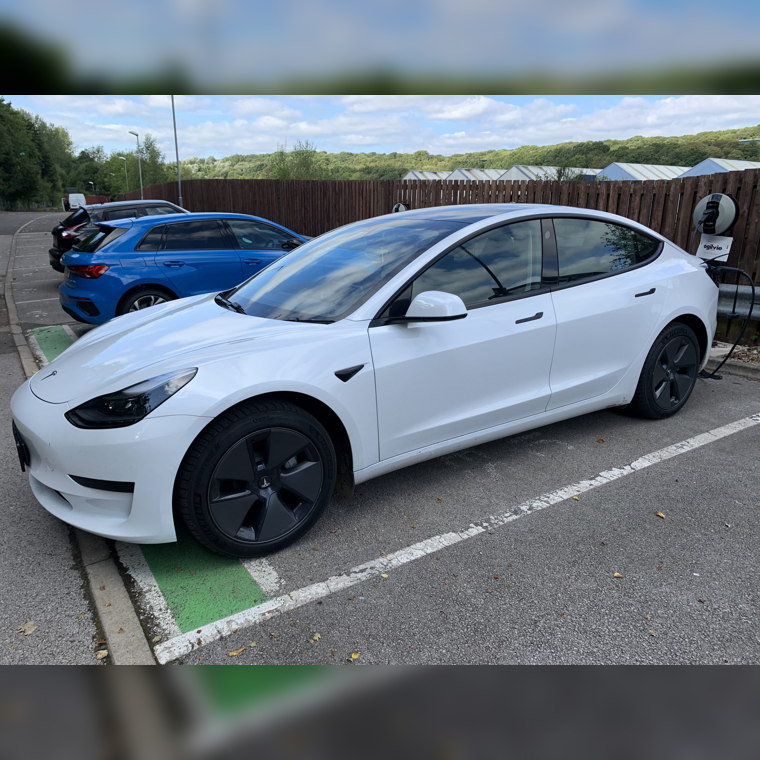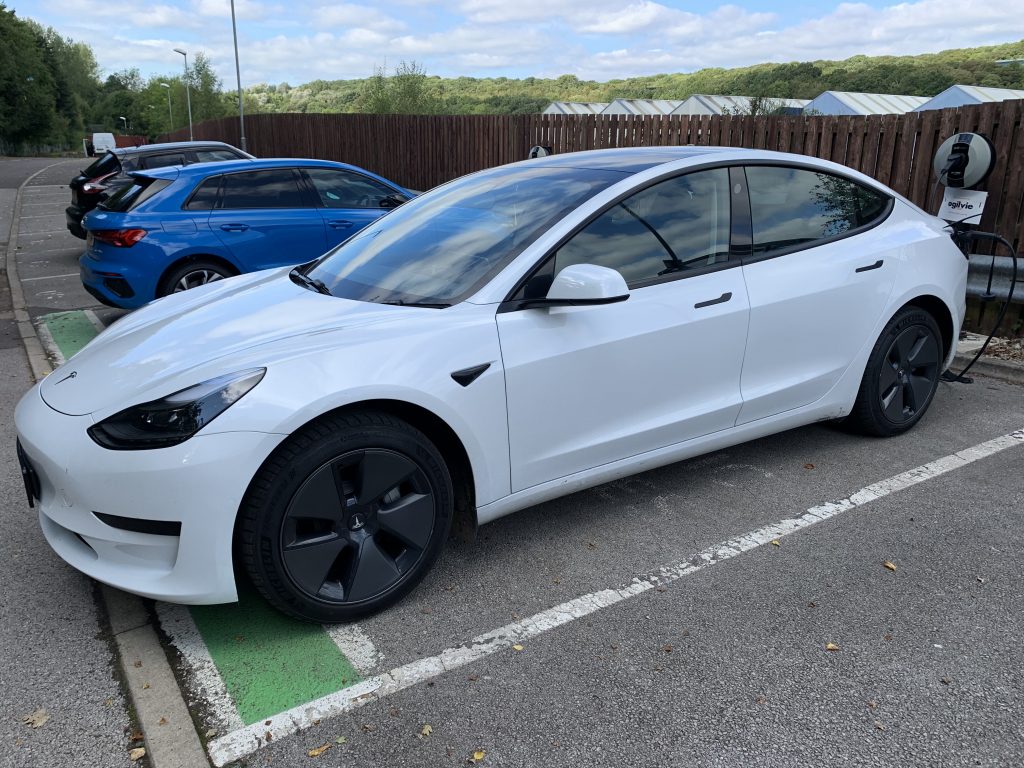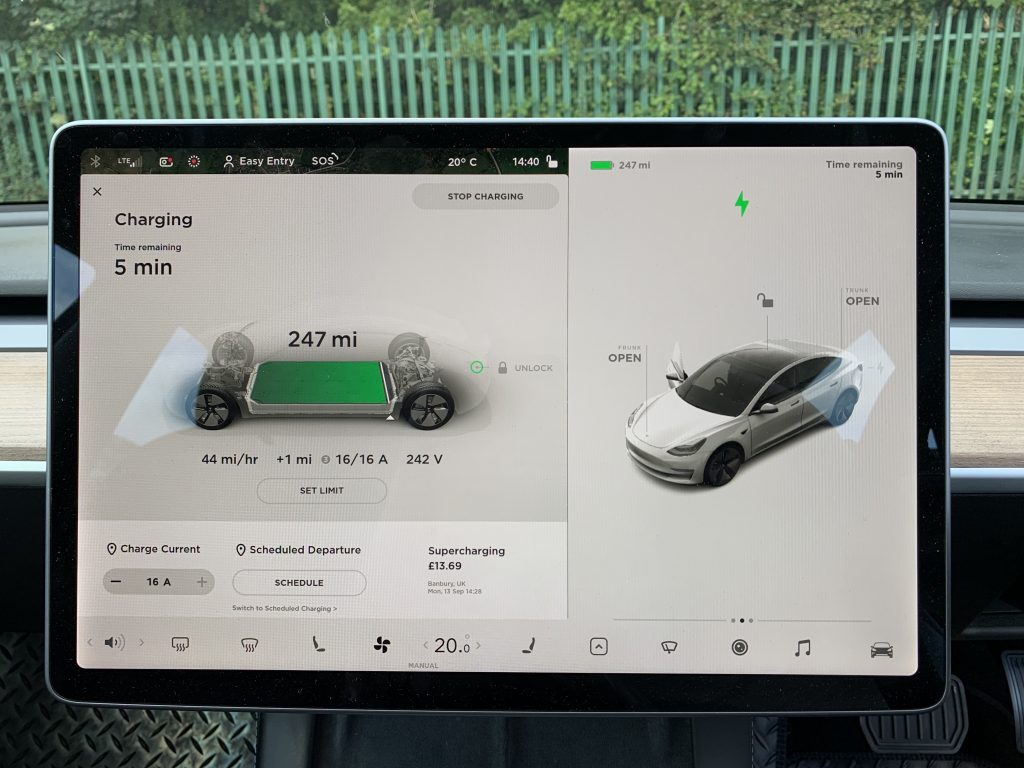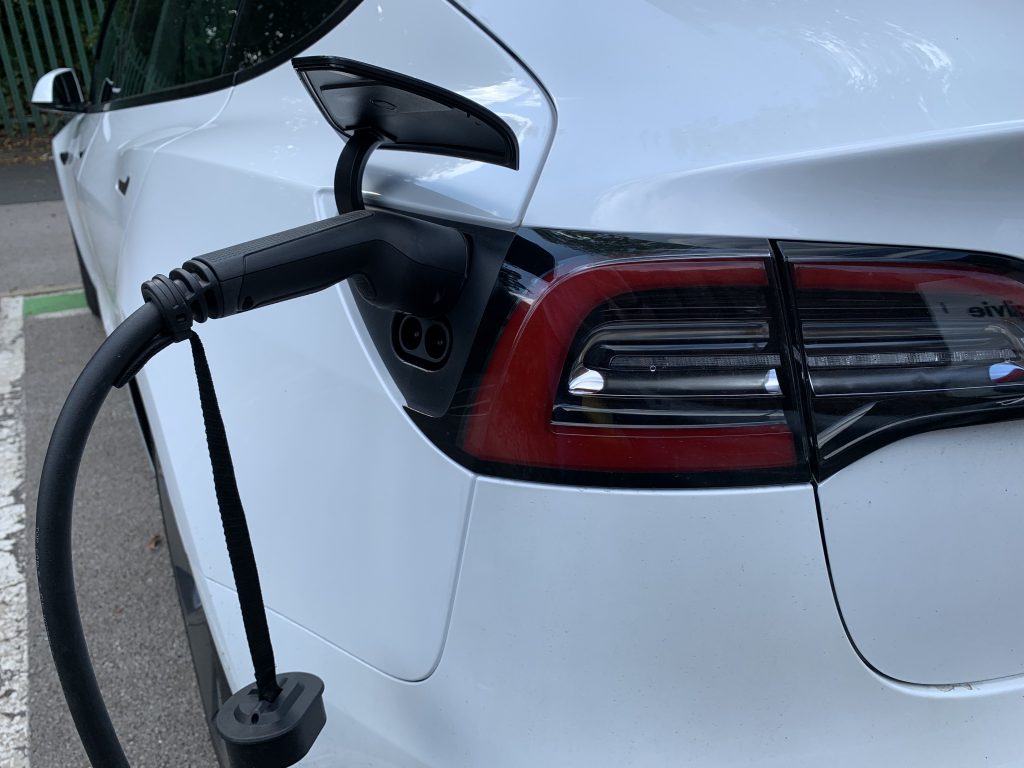Making the switch to electric
Posted on 21 Sep 2021

6 min read
Ogilvie Fleet now allow their staff to choose EVs and Plug in Hybrid vehicles within their choice lists. Many of our employees have now opted for such vehicles due to the compelling savings to be made to BIK and the effects on the environment.
Adrian Horton, who is an area manager in the North of England works with our clients to develop and promote sustainable fleet policies, so he felt it was imperative to adopt an EV for his work and personal journeys to find out if running an EV could work for him.
So having had my new Tesla Model 3 Standard Range for about a week, I decided a ‘road trip’ was in order to put the car through its paces to find out more about its performance, economy, practicality and whether an EV was going to work for me.
Can I live with an Electric Vehicle? How much was it going to cost me? Could I get to my destination in good time? Is charging a faff? Will it help me to contribute to reducing carbon and pollution?
A bit late now if I hated it but here goes…

The Journey!
The first leg was from Halifax to London on a domestic charge at 90% which cost me around £2 and which the supplier claims come from 100% renewables. This got me my first 150 miles with ease and with some charge left over.
I settled into the trip keeping at a modest 65mph on the 227 miles to London down the M1 to conserve energy and used the electric power only when I needed it to overtake.
At Newport Pagnell services, I used the Supercharger network for the first time. I charged up again with just over £8 of electric which took around 15 minutes and I set off on the final leg for that day. Easy! Driving through London was effortless and after 5 hours, I reached Clapham with 100 miles to spare.
Saturday, set off from Clapham to go to Taunton. 153 miles along the M3 and the A303. (Wont go into the hour and a half to get from Clapham to the M3, around 8 miles, this is the reason I live in Yorkshire!).
I put another £13 of electric using the Superchargers at Amesbury while I went in search of more coffee and then set off again to Taunton.
On Monday, I drove from Taunton to Reading and then home in Halifax. The journey was 370 miles and topped up again with £13 of electric at Cribbs Causeway in Bristol and then again in the Midlands spending £12 for the last leg home.

The Costs!
On the whole trip I stuck to 60-70 mph and only ‘floored it’ occasionally. The average range was between 200-210 at 65mph which although was less than the published figure of 267, still worked for me because I wasn’t going to drive any further than that without a break anyway.
The whole journey of 772 miles cost the grand total of just £46 mainly using the Supercharger network which is just 6 pence per mile. If I could have done the same trip using my domestic rate at 5ppKWh it would have cost me around £10 for the trip. In an average diesel car – nearly £100 or 13ppm.
The total charging time to drive 770 miles was around 90 minutes over the 4 days and given this distance, taking breaks is a must so it really didn’t add too much to my journey time at all for this reason. It is recommended that 15-minute break every 2 hours is sensible, so running an EV on this basis worked very well.
You should stop for a break anyway, so why not ‘top up’ at the same time?
If you also consider that with BIK currently at just 1% which is £7pm for a 20% taxpayer and £14 for a 40% taxpayer, the economics start to make sense. Comparing the £250 a month on BIK I used to spend on my company car, previously a PHEV, going EV means I am quid’s in.
Then add in the ‘fuel’ savings and it becomes even more compelling.

The challenges?
If you are thinking of going full EV then clearly you need to ensure you can make it work for you. Given that most commutes are 10-20 miles a day, even the smallest and cheapest EVs can work for most of us given these economies. Even the longer commutes can also be accommodated by an EV if you can charge from home or have access to a charger nearby.
Longer journeys clearly need some planning and if you regularly drive 100-150 miles a day, this will become a challenge, but certainly not insurmountable with a bit of planning and choosing the right EV. Many of us simply will not travel these regular longer distances especially as our work patterns have changed since Covid.
The annual domestic holiday, with a bit of planning, is certainly achievable. You should take a break anyway so why not use it to charge up at the same time.
Most of the roadside chargers I came across were empty, so it does appear there is plenty of capacity in the system.
According to Go Ultra Low, there are now over 42,000 charge points around the UK as well as many more domestic charge points of which make up most of the charging for most journeys. This number is due to grow as the take up of EVs accelerates towards 2030 so this will undoubtedly become easier as more drivers adopt EVs.
Other benefits?
The UK now produces around 50% of its electricity using renewable means and over 20% using nuclear and as we start to ditch fossil fuel production and use, running a sustainable EV will become more practical, accessible, and obviously more socially responsible.
According to Public health England, air pollution is the biggest environmental threat to human health in the UK with between 28,000 and 36,000 premature deaths a year are attributed to long-term poor air exposure.
While running an EV will not solve all our ills, mass adoption will help to relieve city and town centers from some of this poor air quality.
There are of course still concerns about battery technology, and issues around the manufacturing process. If we do feel strongly about this, as I do, then we need to take to public transport or more sustainable means of transport like cycling and walking. However, this remains impractical and often expensive, so an EV surely is one of the ‘cleaner’ and sustainable options we have.
Couple that with the significant financial savings for both the driver and the employer, EVs really can work.
I certainly won’t be going back to petrol, diesel or even hybrid. After all, I have just had a pay rise!
For more information on making the switch to electric, visit the Electric Vehicle Owners Guide here or the EV Database here.
Subscribe to our Newsletter
We only use cookies to help improve our website. View our privacy policy to see how.



